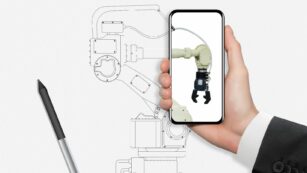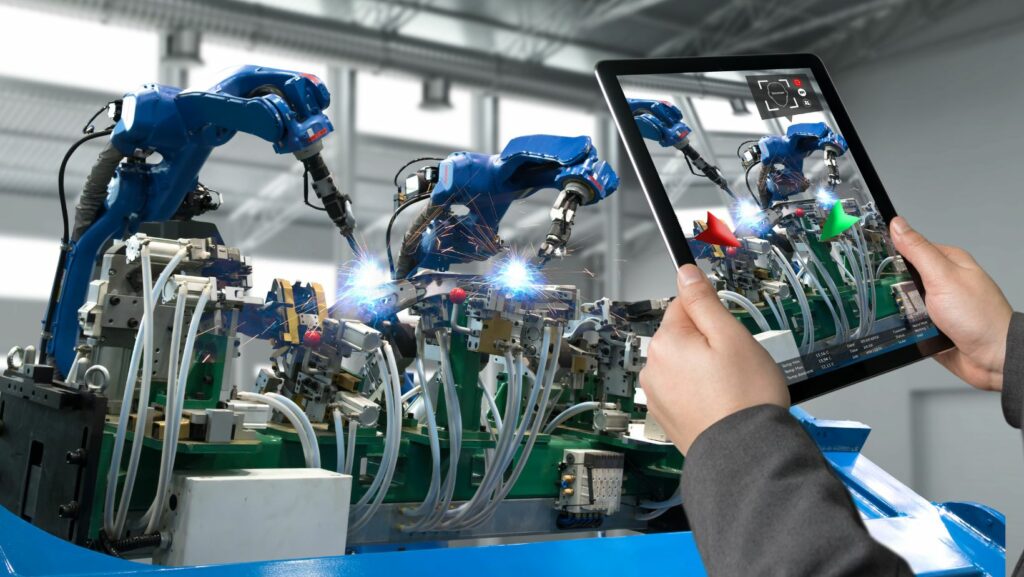Augmented reality (AR) is transforming the way designers create and users interact with digital environments. By overlaying virtual content onto the real world, AR offers a unique blend of reality and digital innovation, making it a powerful tool in various industries. From gaming and entertainment to education and healthcare, the applications of AR design are expanding, pushing the boundaries of user experience and interaction.
Augmented Reality Design
Augmented Reality (AR) design melds digital information with the physical world, offering innovative user experiences. This design domain requires a nuanced understanding of both technological tools and creative expression to develop applications that are engaging and intuitive.
The Basics of Augmented Reality
 Augmented Reality enhances users’ perception of the real world through digital overlays, including images, sounds, and other sensory stimuli. AR operates by using devices like smartphones, glasses, or headsets that project or display digital content onto the user’s view of their environment. Key components include:
Augmented Reality enhances users’ perception of the real world through digital overlays, including images, sounds, and other sensory stimuli. AR operates by using devices like smartphones, glasses, or headsets that project or display digital content onto the user’s view of their environment. Key components include:
- AR Software: This forms the backbone, allowing designers to create and deploy AR experiences.
- Tracking Systems: These are crucial for aligning virtual objects with the real world, typically using sensors and cameras.
- User Interaction: Interaction methods must be simple and natural to enhance user engagement and avoid cognitive overload.
Effective AR design utilizes these elements to create experiences that seamlessly integrate with the user’s natural environment, thereby amplifying the interaction rather than disrupting it.
Key Tools and Platforms for AR Design
Augmented Reality (AR) design relies on a combination of software and platforms to merge digital content seamlessly with the real world. These tools not only facilitate the creation of immersive experiences but also enable designers to innovate and iterate rapidly.
Software Tools for Creating AR Experiences
 Selecting the right software is critical for AR developers aiming to craft compelling digital overlays. Here are some notable tools:
Selecting the right software is critical for AR developers aiming to craft compelling digital overlays. Here are some notable tools:
- Unity: This tool stands out for its robust features that support both 2D and 3D game development. Unity offers a wide range of functionalities specific to AR, including asset integration, simulation, and an extensive library of visual effects.
- Unreal Engine: Known for powering high-quality visuals, Unreal Engine provides AR developers with powerful rendering capabilities. It’s particularly valued for its high-fidelity graphics and real-time rendering features.
- Vuforia: This software excels in advanced camera and object recognition capabilities, making it ideal for applications needing reliable image recognition.
- ARKit and ARCore: Developed by Apple and Google respectively, these SDKs (Software Development Kits) allow for the creation of AR experiences tailored to iOS and Android platforms. They provide features like motion tracking, environmental understanding, and light estimation.
AR Development Forum Platforms and Their Features
- ARCore by Google: Offers features such as environmental HDR, which enhances light and color to make virtual objects appear more realistic. Developers can also use ‘Cloud Anchors’ for multiplayer AR experiences.
- ARKit by Apple: Provides an exceptional level of precision in user environment perception and includes Face Tracking technology for more engaging user interactions.
- Microsoft HoloLens: While primarily a hardware solution, HoloLens comes with development tools that integrate seamlessly with Windows applications, emphasizing spatial awareness and interaction.
Best Practices in Augmented Reality Design
In the rapidly evolving field of augmented reality (AR), adhering to best practices in design is crucial for creating engaging and effective user experiences. This section explores key strategies and solutions for enhancing AR interfaces and overcoming common design challenges.
Enhancing User Experience in AR
 Augmented reality interfaces thrive when they are intuitive and immersive. Designers enhance user experience by focusing on several core elements:
Augmented reality interfaces thrive when they are intuitive and immersive. Designers enhance user experience by focusing on several core elements:
- User-Centric Design: Tailoring experiences to meet user needs and expectations increases engagement. For example, AR applications in retail can use virtual try-on features to enhance shopping experiences.
- Context Awareness: AR systems must be aware of the physical environment to blend digital content seamlessly. Implementing advanced sensors and spatial recognition technologies ensures that digital overlays correspond accurately to the real world.
- Interactivity: Interactive elements, like gesture and voice controls, boost user involvement. Employing natural user interface elements can transform passive experiences into interactive sessions.
- Minimized Latency: High responsiveness is critical. Reducing lag between user actions and AR responses enhances the sense of immersion.
- Clear Visuals and Audio: Crisp graphics and appropriate audio cues are essential for clarity.

